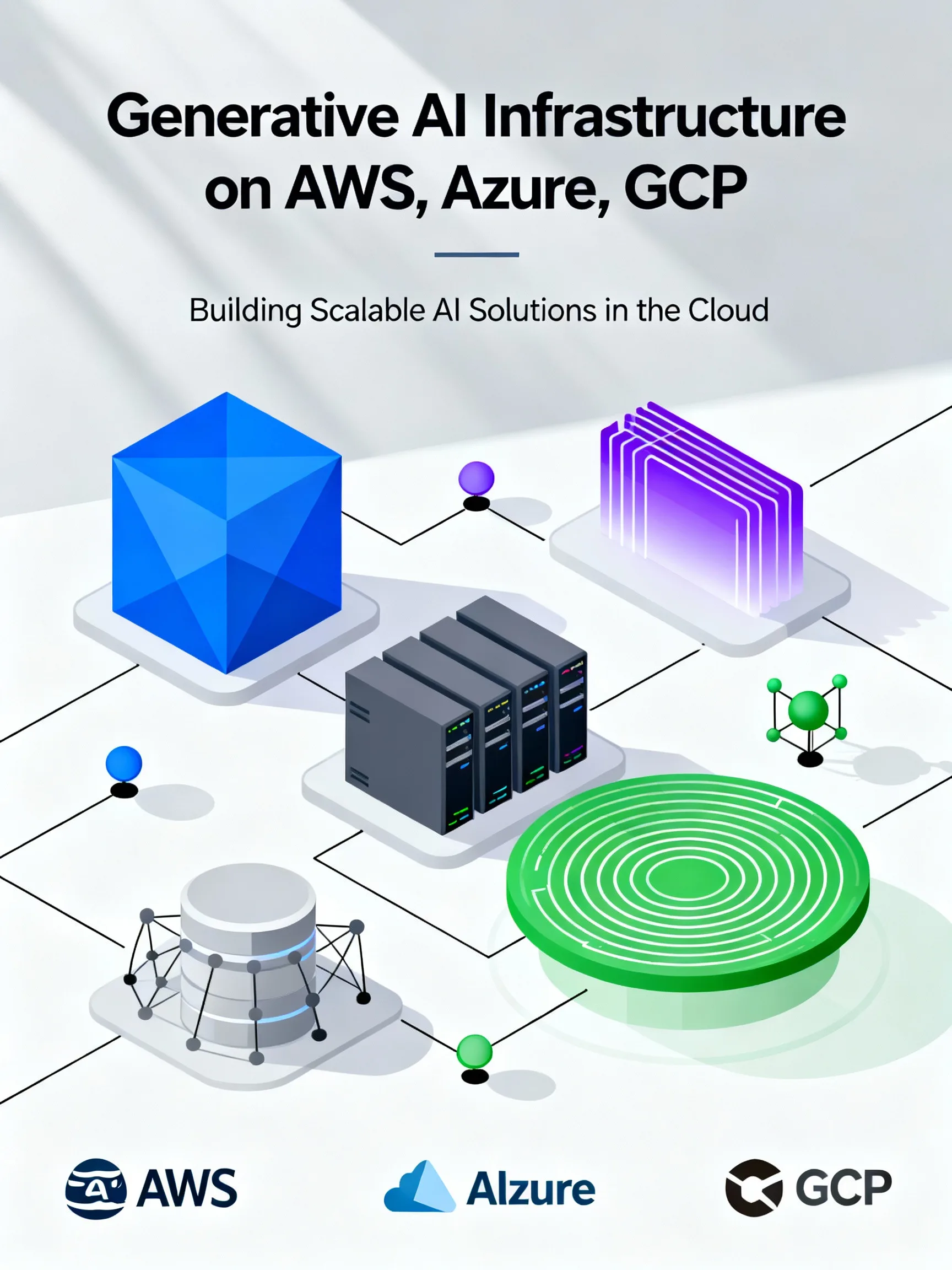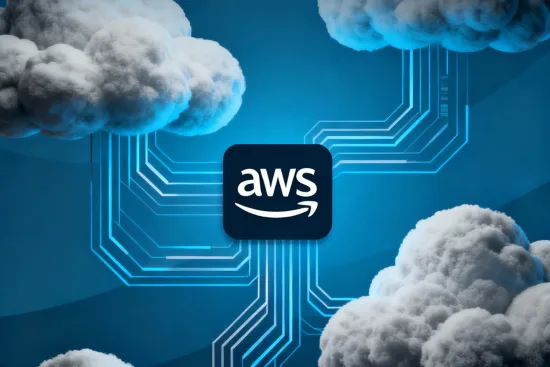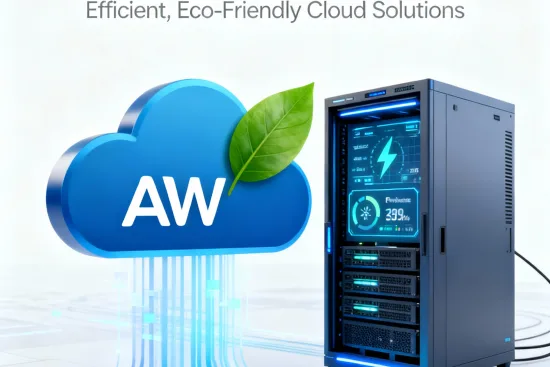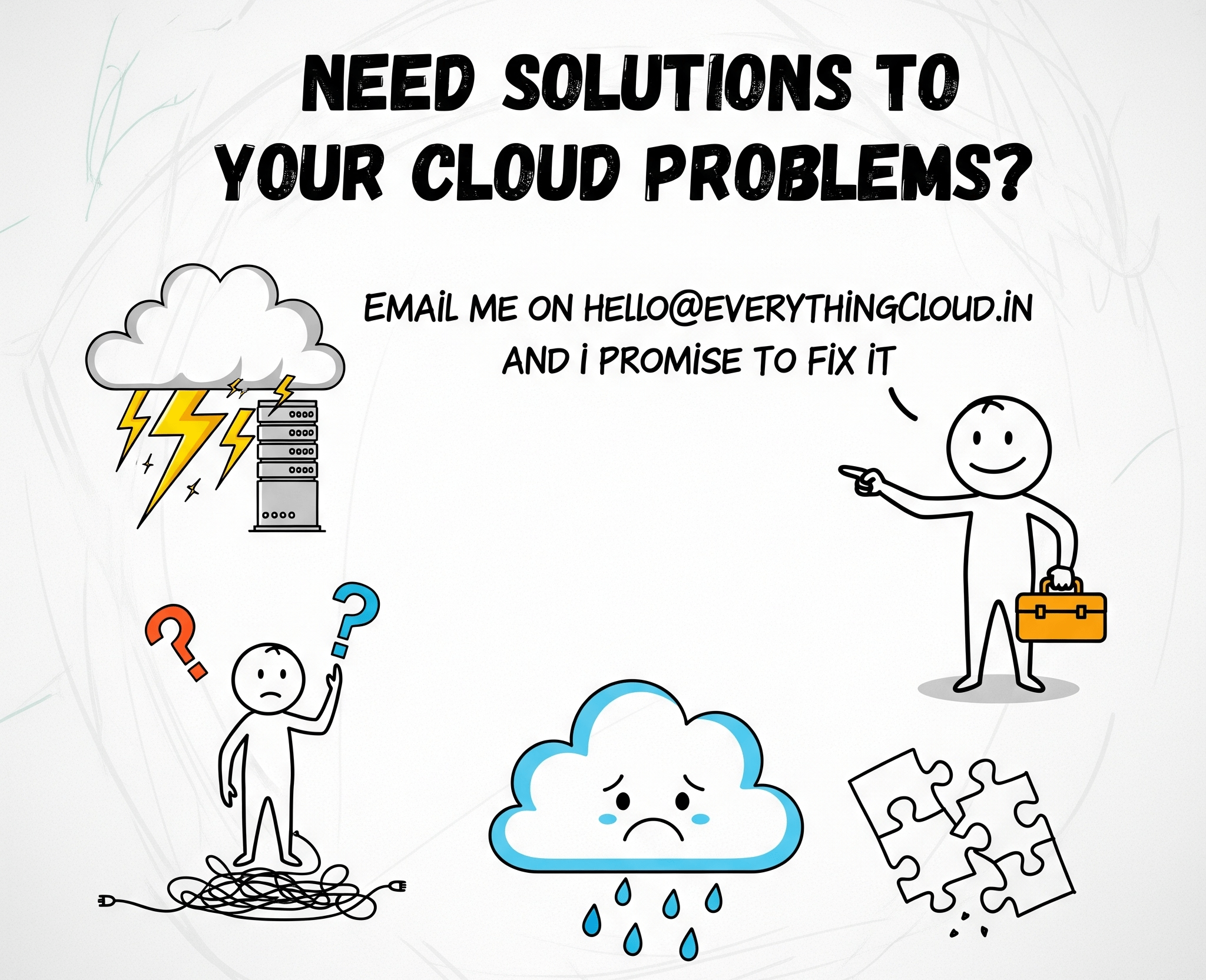
Introduction
The GenAI Gold Rush demands robust, scalable Generative AI infrastructure to train and serve large models reliably. Teams must balance GPUs, managed services, storage, networking, and cost controls while meeting latency and compliance targets. This article explains practical design patterns across AWS, Azure, and GCP to build production-ready systems for generative workloads.
Right‑sizing compute and storage
Generative AI infrastructure begins with choosing the right compute and storage. Training large language models often requires multi‑GPU nodes (NVIDIA A100/H100 or Google TPUs) and distributed frameworks like DeepSpeed or PyTorch Distributed. For inference, consider GPU instances for low latency and specialized accelerators (AWS Inferentia, AWS Trainium, or GCP TPUs) for cost‑efficient high throughput.
Storage choices matter: use object stores (S3, Azure Blob, GCS) for raw datasets and model checkpoints, and attach high‑throughput block storage (EBS, Managed Disks) for active training data. Cache hot model shards on local NVMe where possible to reduce network I/O. Practical tip: keep model artifacts in tiered storage and prewarm local caches before scheduled inference peaks.
Platform choices: AWS, Azure, GCP in practice
Each cloud has strengths that map to workload patterns. On AWS, SageMaker + Bedrock offer managed training and model deployment; p4d and p5 instances provide A100/H100 GPUs and SageMaker supports distributed training with DeepSpeed. Use S3 for artifacts, FSx Lustre for high I/O training datasets, and Amazon EKS for custom inference stacks (Triton, custom containers).
Azure combines Azure Machine Learning, Azure OpenAI, and AKS. Azure ML manages experiment tracking, cluster scaling, and integrates with NVidia VMs for training; AKS is useful for autoscaling inference pods and running Triton or custom microservices. For enterprise compliance, Azure provides integrated identity and policy controls useful for regulated workloads.
GCP centers on Vertex AI and Cloud TPU. Vertex AI simplifies model orchestration, feature store, and continuous evaluation. For large training runs, TPUs (v3/v4) can be more cost‑effective for some transformer workloads. Cloud Storage and Filestore serve as primary data layers; Anthos or GKE provide portable inference stacks if you need hybrid deployments.
Operational patterns for training and inference
Design separate pipelines for training and inference. Training pipelines should emphasize reproducibility (data versioning, experiment tracking), parallelism (data and model parallelism), and checkpointing. Use managed training jobs to reduce ops overhead but retain the option to run on EKS/GKE for custom optimizations like mixed precision, ZeRO, or custom schedulers.
For inference, design for latency and cost: implement multi‑tier serving with a small fleet of GPU‑backed pods for low‑latency queries and a larger set of batch/async workers for high‑throughput requests. Techniques such as 8‑bit quantization, dynamic batching, and model distillation reduce GPU memory and improve cost efficiency. Autoscaling policies should account for tail latency — keep a small warm pool of instances to prevent cold starts.
Example: use Triton Inference Server on EKS/AKS/GKE to manage multiple models, enable dynamic batching, and export metrics. Combine with a caching layer (Redis/Memcached) for frequent prompt results and a queuing system (Kafka, Pub/Sub) for asynchronous workloads.
Security, compliance, and monitoring
Generative AI infrastructure must protect data and models. Implement network segmentation, IAM least privilege, and encryption at rest and in transit. Use cloud KMS for keys and secrets managers for credentials. For regulated data, leverage provider compliance features and isolated VPCs or private endpoints.
Monitoring should include model‑level signals (accuracy drift, hallucination rates), system metrics (GPU utilization, memory pressure), and user‑facing metrics (latency, error rate). Integrate tracing and logging (CloudWatch, Azure Monitor, Stackdriver/Cloud Monitoring) and set SLOs for both accuracy and latency. Practical advice: instrument model outputs for quality checks and route suspect responses to human review queues to close the feedback loop.
Cost optimization and governance
Cost control is central during the GenAI Gold Rush. Use spot/preemptible instances for non‑critical training; leverage savings plans and committed use for steady inference loads. Optimize models with mixed precision, pruning, and quantization to lower GPU hours. Consolidate model artifacts with deduplication and reuse shared embeddings or components to avoid retraining.
Governance: track who can deploy models, require review gates, and maintain an inventory of models and datasets. Automate policy enforcement using infrastructure as code and CI/CD pipelines that run tests, security scans, and bias checks before production deployment.
Conclusion
Building Generative AI infrastructure across AWS, Azure, and GCP means combining the right hardware, managed services, and operational practices. Focus on tiered storage, appropriate accelerators, autoscaling patterns, and strong monitoring and governance. With careful design — from cost controls to security and observability — teams can move quickly while keeping generative systems reliable and efficient.






Leave a Reply